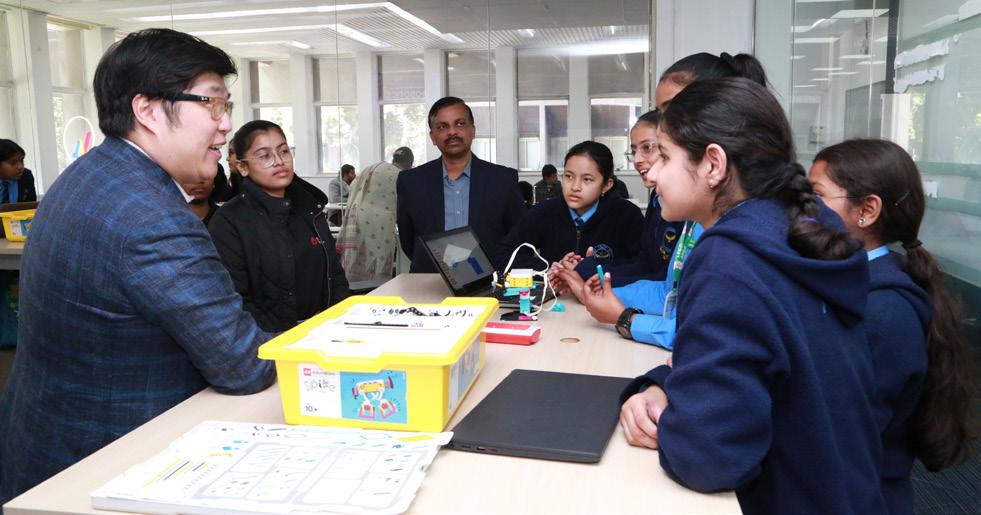SPAN



https://spanmag.state.gov
Editor in Chief
Nicole S. Holler
Editor
Deepanjali Kakati
English Associate Editor
Charvi Arora
Hindi Associate Editor
Giriraj Agarwal
Urdu Associate Editor
Syed Sulaiman Akhtar
English Copy Editor
Krittika Sharma
Urdu Copy Editor
Zahoor Hussain Bhat
Art Director/ Production Chief
Hemant Bhatnagar
Deputy Art Directors/ Production Assistants
Qasim Raza, Shah Faisal Khan
* Articles with a star may be reprinted with permission. Those without a star may not be reprinted. Contact SPAN at 011-23472135 or editorspan@state.gov
Ashutosh Dutt Sharma’s IVLP experience highlights how Quad collaboration supports efforts to build a tech-skilled workforce in critical technologies across the Indo-Pacific.
As countries invest in emerging technologies like artificial intelligence (AI), robotics and cybersecurity, the United States and India—together with their Quad partners Australia and Japan—are deepening cooperation on workforce development. This includes building connections among universities, industry and government to prepare a future-ready workforce across the Indo-Pacific. One example of this collaboration is the U.S. Department of State’s International Visitor Leadership Program (IVLP), which facilitates professional exchanges in critical and emerging fields.
The IVLP is the U.S. Department of State’s foundational professional exchange program and builds long-term relationships between Americans and international leaders across different fields.
In 2024, Ashutosh Dutt Sharma, chief executive officer of the I-Hub Foundation for Cobotics (IHFC), participated in an IVLP on “Workforce Development for Critical and Emerging Technologies in the Quad,” an experience that has shaped his perspective on international collaboration in building future-ready workforces.
A foundation for innovation
Cobotics, or collaborative robotics, refers to technologies that enable humans and robots to work together—a field that represents the convergence of multiple cutting-edge disciplines.
BY SYED SULAIMAN AKHTAR

“IHFC’s mission is to support research, innovation, STEM (science, technology, engineering and mathematics) education and entrepreneurship in the field of cobotics,” Sharma explains. The foundation promotes entrepreneurship and research in technology areas like AI, robotics and machine learning, running fellow-
ship, mentorship and internship programs for students and start-ups, along with skill-building workshops to help deep-tech ventures grow.
IHFC contributes to India’s growing innovation ecosystem through its support for deep-tech ventures and education programs. Currently, the foundation
supports 38 research-led start-ups that develop advanced technologies to create positive social impact. Beyond supporting established ventures, IHFC conducts STEM outreach in schools to spark early interest in cobotics and technology careers, building the foundation for tomorrow’s workforce.
A transformative international experience
Sharma’s participation in the IVLP provided crucial insights into how different nations approach workforce development in critical technologies.
“Participating in the IVLP was a transformative experience,” he reflects. “As an inter-regional project with participants from Australia, India and Japan, it provided an opportunity to see how the United States is preparing a modern, technically capable workforce which can work on critical and emerging technologies.”
The program allowed participants to explore how the United States develops its workforce in areas essential to national security and technological competitiveness.
Sharma and his fellow participants gained first-hand exposure to emerging fields like AI, robotics, quantum computing and cybersecurity.
Through interactions with experts and organizations, the program revealed both challenges and practical solutions facing the Quad nations.
Centers (CIC) to support continuous learning, and the critical role of industry partnerships also stood out,” he observes. These insights have informed aspects of IHFC’s ongoing approach to workforce development in India.
Sharma has applied these learnings through certification programs, lab-to-market initiatives, and Centers of Excellence like the Drone Tech Park and Medical Cobotics Centre. The foundation promotes applied innovation through robotics competitions and supports early-stage entrepreneurs while focusing on lifelong learning by offering upskilling opportunities, scalable training programs and strong partnerships that remain relevant both in India and globally.
The IVLP experience highlighted several key approaches that the United States employs in preparing its workforce for emerging technologies. Sharma identified competencybased training and certifications as crucial tools for bridging the gap between academic curricula and industry needs.
“Notably, there was strong alignment across Quad nations on the importance of strengthening industry-academia-government partnerships and ensuring access through flexible education pathways—from advanced degrees to apprenticeships,” Sharma notes.
The IVLP experience highlighted several key approaches that the United States employs in preparing its workforce for emerging technologies. Sharma identified competency-based training and certifications as crucial tools for bridging the gap between academic curricula and industry needs.
“The use of replicable models like Co-Innovation
A vision for collaboration
In the February 2025 U.S.-India Joint Leaders’ Statement, President Donald Trump and Prime Minister Narendra Modi reaffirmed their commitment to developing a future-ready workforce through stronger international academic collaborations. They pledged to expand collaborations between higher education institutions through joint degree programs, Centers of Excellence and offshore campuses of premier educational institutions of the United States in India.
Sharma believes there is great potential for collaborative efforts among the Quad nations. “The Quad holds strong potential to become a global model for collaborative tech education and workforce development,” he states. “By aligning efforts, the Quad nations can establish cross-border Centers of Excellence, promote joint research and development and student exchange programs, and develop shared training standards and certifications.”
He sees collaboration on technology ethics as another avenue that can enhance national initiatives and help build a resilient, future-ready workforce across the Indo-Pacific and beyond. Such collaboration can support not only technical training but also conversations around ethical frameworks for responsible innovation in emerging technologies.
Quad Infrastructure Fellow Nikita Singla discusses how U.S.-India collaboration and Quad partnerships can modernize ports, secure trade routes and build resilient infrastructure across the Indo-Pacific.
BY CHARVI ARORA
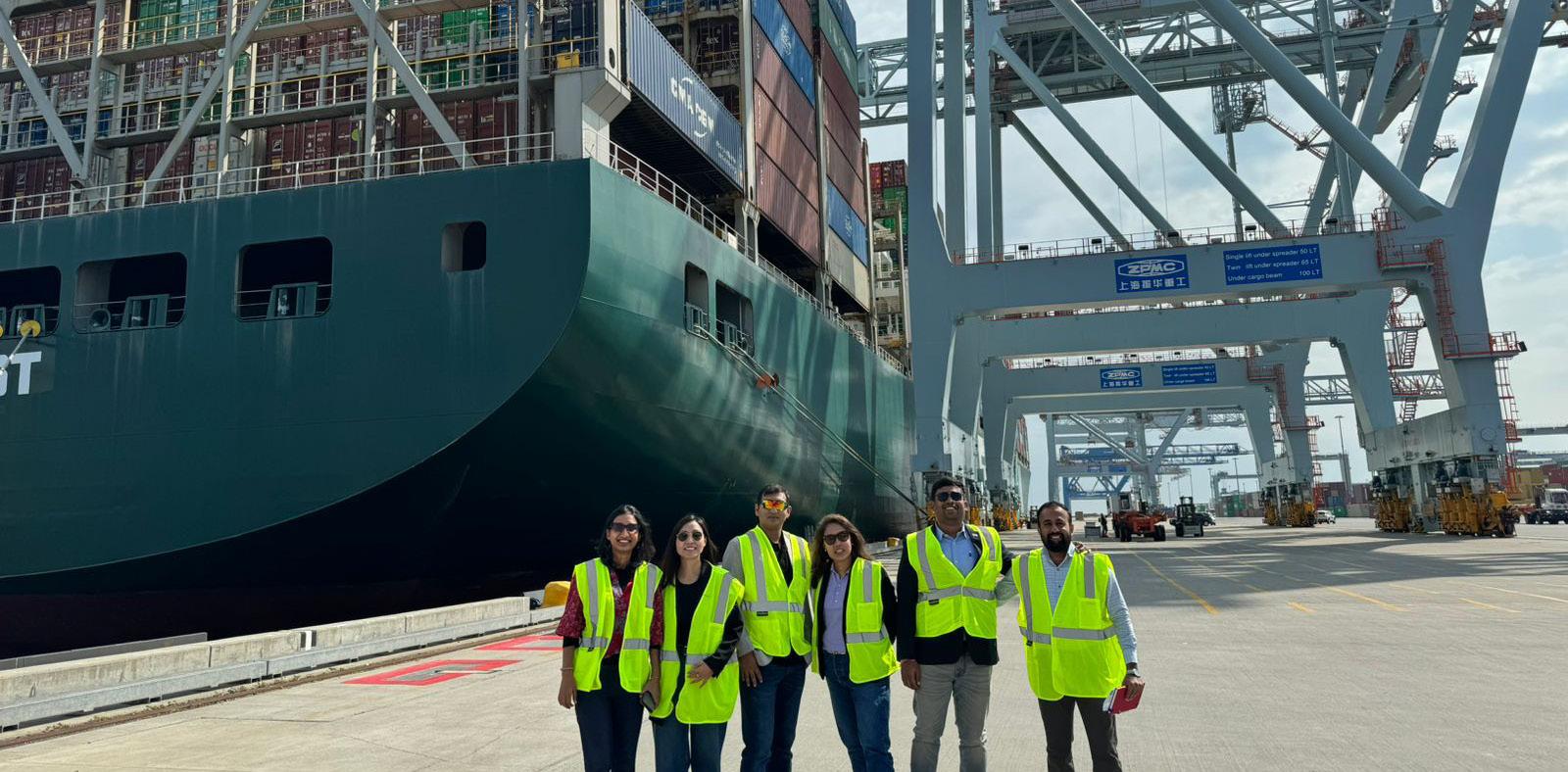
Strong ports build strong economies. As global trade faces growing challenges, ports must evolve to become not only efficient but also smart and secure. Nikita Singla, a specialist in trade facilitation and logistics, explored these issues through the 2024 Quad Infrastructure Fellowship. Supported by the U.S. Department of State, the fellowship brings together professionals from the Indo-Pacific region, who work on resilient infrastructure. Singla has worked at more than 40 ports in South Asia and currently serves as a non-resident scholar at the Carnegie Endowment for International Peace and a consultant to the World Bank. Her fellowship experience aligns with the February 2025 U.S.-India Joint Leaders’ Statement, in which President Donald Trump and Prime Minister Narendra Modi prioritized investing in critical infrastructure and economic corridors to promote regional peace and security. During her visit to the United States, Singla saw firsthand how ports like Seattle and Boston leverage technology and strong governance to enhance trade and safety. Her experience highlights how U.S.-India cooperation can strengthen supply chains, deepen economic ties and build resilience in both countries. Excerpts from an interview.

Can you share your key experiences during the Quad Infrastructure Fellowship and how your visit to the United States shaped your perspective on infrastructure projects?
This fellowship gave me an opportunity to engage with port experts across the Indo-Pacific region. We visited Seattle, Boston and Washington, D.C., and met key stakeholders including the U.S. Department of State, U.S. Customs and Border Protection, U.S. Coast Guard, Port of Seattle, Port of Boston, Massachusetts Institute of Technology and The Fletcher School at Tufts University.
The fellowship helped me explore new approaches to port security. What stood out the most was the emphasis on collaboration over competition. Engaging with professionals from different backgrounds fostered mutual learning and encouraged fresh thinking on developing future-ready port infrastructure.
What key skills from your fellowship will continue to shape your work in port development?
One key learning came from our session with the U.S. Customs and Border Protection, where we explored the Customs-Trade Partnership Against Terrorism (CTPAT). It highlighted security standards, risk assessments and trusted trader systems. This helped me understand how such a framework connects with India’s AEO (Authorized Economic Operator) initiative. It also reinforced the importance of strong trade partnerships and U.S.-India collaboration.
Our meetings with the U.S. Department of State and the Department of Homeland Security underscored the critical role secure port infrastructure plays in supporting global trade and resilient supply chains. These exchanges deepened our understanding of our role in shaping the future of infrastructure in the Indo-Pacific region.
In your view, why is Quad cooperation strategically important for driving infrastructure development in the Indo-Pacific, especially for India and the United States?
Quad cooperation goes beyond a strategic alliance—it is built on shared values like transparency and respect for international rules. For India, the Quad strengthens the country’s regional role and helps attract investment in future-ready infrastructure. It also supports India’s efforts to keep key trade routes—on land and at sea—secure and open, which is vital for a strong economy. For the United States, the Quad reinforces its commitment to a free and open Indo-Pacific. It also creates new business opportunities for American companies in emerging infrastructure markets.
Beyond geopolitics and market access, the Quad’s collaborative spirit—working together on shared challenges—is noteworthy. This shared sense of purpose makes the Quad powerful. It’s a platform for real and impactful change on the ground.
How does resilient port infrastructure help stabilize


global supply chains and safeguard trade flows, particularly in the Indo-Pacific context?
Global supply chains face constant disruptions— from pandemics to geopolitical tensions. In this context, resilient port infrastructure is essential for keeping trade stable and secure.
For both India and the United States, building strong, future-ready ports supports not only trade, but also national security, economic independence and regional influence.
U.S.-India collaboration in this area has immense potential. From sharing knowledge to improving port governance and setting standards for secure trade corridors, both countries have much to offer each other. Resilient ports are more than just infrastructure; they are economic lifelines. When we build them the right way, we build trust into the global trade system.
What are the major challenges and opportunities in attracting long-term investment into port infrastructure within the Indo-Pacific region, and how can the Quad nations collaborate on this?
Port infrastructure today is about more than just moving cargo. It supports economic growth, secures trade routes and helps manage global disruptions. Both India and the United States recognize this, though they face different challenges.
In India, the priorities are modernizing aging ports, improving last-mile connectivity, and building resilient systems. U.S. ports, though more advanced, also often
For both India and the United States, building strong, future-ready ports supports not only trade, but also national security, economic independence and regional influence.
deal with aging infrastructure and labor shortages.
To keep supply chains running smoothly and securely, we need strong ports. This is where the U.S.-India partnership becomes crucial. Together, there is significant potential—from joint ventures and knowledge-sharing programs to building smart port models.
STATEMENT FORM IV
The following is a statement of ownership and other particulars about SPAN magazine as required under Section 19D(b) of the Press & Registration of Books Act, 1867, and under Rule 8 of the Registration of Newspaper (Central) Rules, 1956.
Place of Publication: Public Affairs Section, American Embassy, American Center 24, Kasturba Gandhi Marg, New Delhi 110001
Periodicity of Publication: Bi-monthly
Printer’s Name: C.J. Jassawala
Nationality: Indian
Address: Thomson Press India Ltd., 18/35, Delhi Mathura Road Faridabad 121007
Printer’s Name: Vijay Adlakha
Nationality: Indian
Address: Infinity Advertising, Services (P) Ltd., Plot No.-171 & 172, | Sector-58, Faridabad 121004
Publisher’s Name: Gloria F. Berbena
Nationality: American
Address: 24, Kasturba Gandhi Marg, New Delhi 110001
Editor’s Name: Deepanjali Kakati
Nationality: Indian
Address: 24, Kasturba Gandhi Marg, New Delhi 110001
Name and address of The Government of the United States of America
individuals who own the newspaper and partners or shareholders holding more than one percent of the total capital:
I, Gloria F. Berbena, hereby declare that the particulars given above are true to the best of my knowledge and belief.
Date: June 23, 2025
Gloria F. Berbena Signature of Publisher
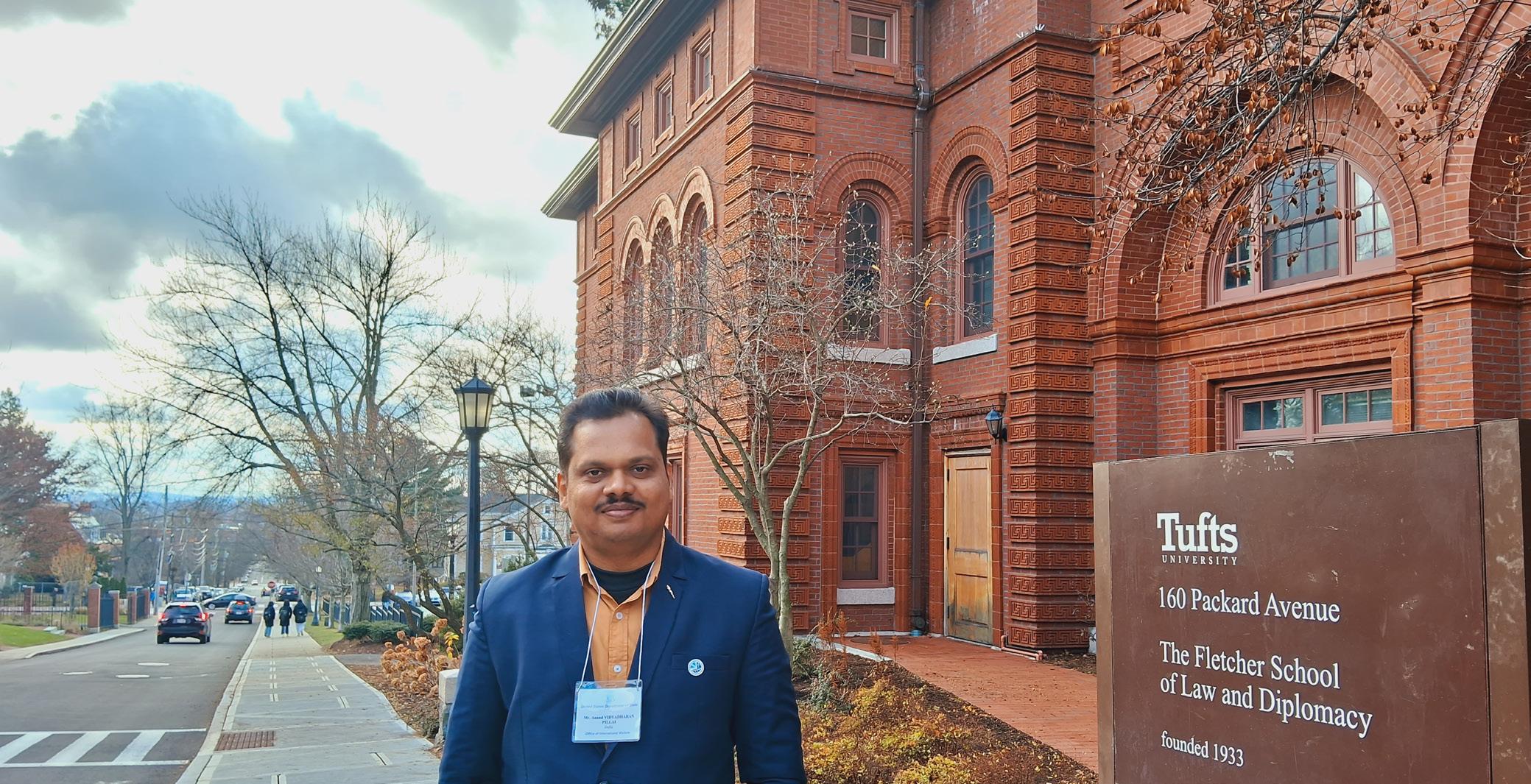
A U.S. government exchange program deepens Quad cooperation by equipping participants with insights on maritime security, infrastructure protection and regional coordination.
BY GIRIRAJ AGARWAL
To strengthen Quad cooperation on maritime security, 11 experts from India, Australia and Japan traveled to the United States in 2023 for a U.S. Department of State-sponsored International Visitor Leadership Program (IVLP) titled “Enhancing Regional Maritime Governance and Cooperation in the Quad.” Over the course of three weeks, the delegation explored U.S. maritime governance practices, discussed shared challenges in the Indo-Pacific, and exchanged insights on regulatory frameworks, capacity building and emerging technologies.
The IVLP program, the U.S. government’s premier professional exchange program, advances U.S. national security priorities and builds enduring relationships between Americans and international leaders. Among the participants in the program on maritime governance and Quad cooperation was Anand Vidyadharan Pillai, a geopolitics and international relations expert who coordinates the China Study Centre at the Manipal Institute of Social Sciences, Humanities and Arts.
During the program, participants engaged U.S. stakeholders on topics critical to Indo-Pacific cooperation—ranging from cybersecurity and disaster response to maritime domain awareness and port security. They examined how Quad initiatives, like the Indo-Pacific Partnership for Maritime Domain Awareness (IPMDA), promote coordination across governments and sectors.
Participants agreed that despite complex regional challenges, sustained collaboration on strategic infrastructure, technology integration and information sharing will be essential to advancing the Quad’s vision for a free, open and secure Indo-Pacific—a goal reinforced in the 2025 U.S.-India Joint Leaders’ Statement.
Excerpts from an interview with Pillai.
What were your key takeaways from the IVLP on “Enhancing Regional Maritime Governance and Cooperation in the Quad”?
Participating in the IVLP project offered valuable insights into the United States’ maritime strategy in the Indo-Pacific, particularly in relation to national security and foreign policy objectives. I also gained a deeper understanding of how participants from other Quad members—Japan and Australia—view critical issues shaping the regional security landscape.
Traveling along both the East and West Coasts of the United States provided a broader perspective on American politics and society. The program created opportunities to engage with a wide network of experts and peers working on Indo-Pacific security and political affairs. Importantly, it also offered a unique view of how India’s role in the region is perceived by its Quad partners.
What locations did you visit, and what stood out from your interactions with U.S. experts and institutions?
I visited a range of institutions—including government agencies, academic centers, non-governmental organizations and think tanks—in Washington, D.C., Boston, San Diego and Honolulu. I observed a consistent focus on the strategic importance of the Indo-Pacific and the need to address both conventional and non-conventional challenges in the region.
One particularly eye-opening experience was learning about the U.S. Department of Transportation’s role in strategic planning for military operations. Visits to major U.S. ports deepened my understanding of the maritime security challenges.
How can the Quad more effectively promote a secure, open Indo-Pacific, and what joint initiatives stand out?
The Quad is emerging as an essential platform for ensuring a free, open, secure and prosperous Indo-Pacific. One of its most significant ongoing initiatives is the IPMDA program. It enables comprehensive surveillance across the region’s maritime domain. By improving real-time monitoring, IPMDA can both detect and deter threats to freedom of navigation and regional maritime interests.
To achieve its full potential, the initiative will require sustained and deepened cooperation among the Quad members and engagement with regional partners and like-minded nations. During the IVLP, the IPMDA featured prominently in discussions on maritime security, reflecting its importance as a shared priority.
How do you intend to apply the insights gained from this exchange program in your professional work and contribute to advancing Quad cooperation?
I intend to incorporate the insights gained into my teaching, academic and policy research, as well as dialogue initiatives focused on Indo-Pacific security and regional cooperation. These perspectives will help contextualize key regional dynamics for students and early-career researchers.
Additionally, I aim to foster academic exchanges, research collaborations and ongoing dialogue between India and other Quad nations, leveraging the networks and relationships established through this program.
What steps can Quad members take to better coordinate maritime efforts and protect strategic
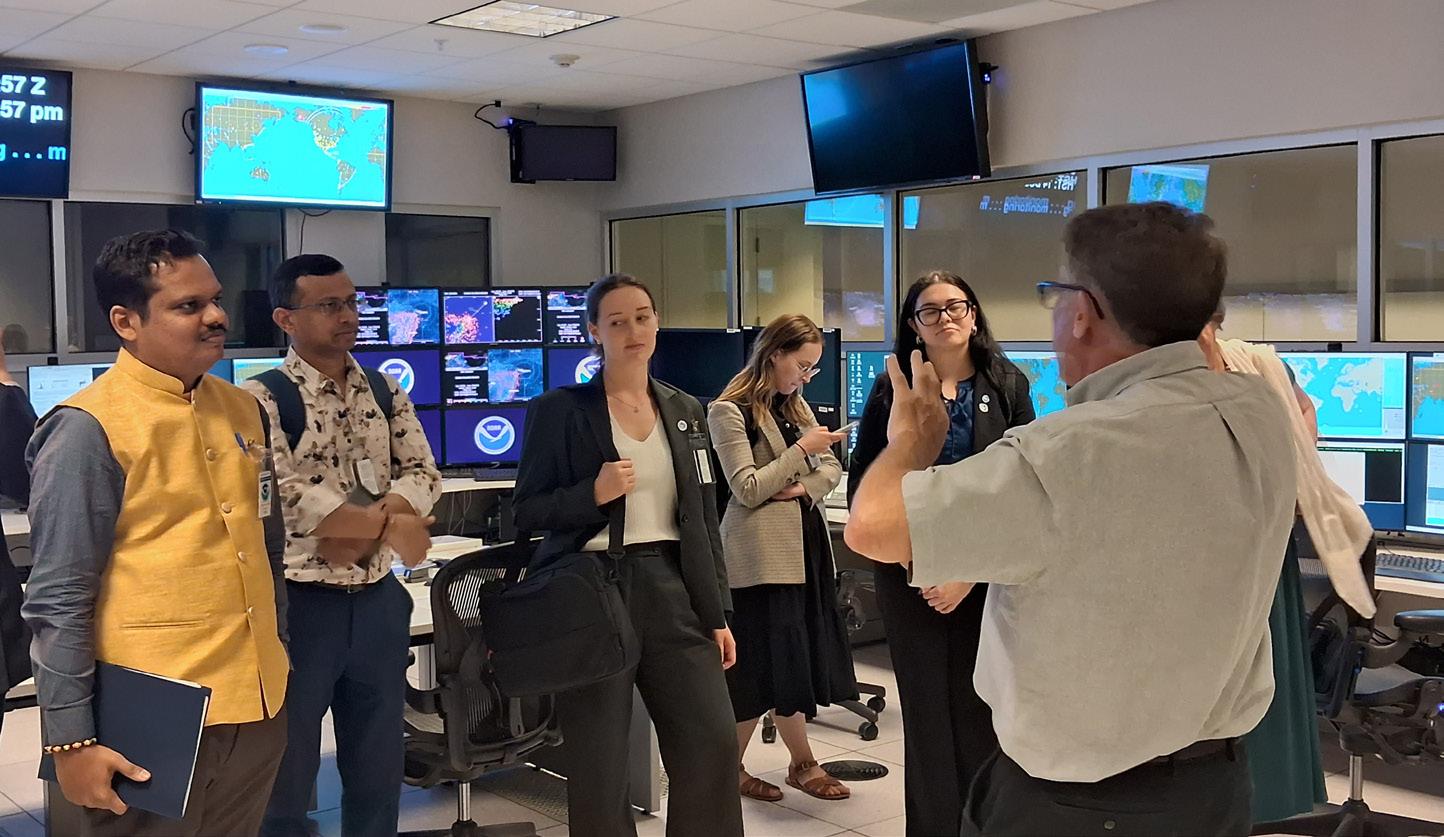
infrastructure from conventional and cyber threats?
One of the most pressing maritime security concerns in the Indo-Pacific is the vulnerability of undersea communication cables. These cables carry the majority of global internet and communications traffic and are largely owned by private entities. They face growing risks from accidental damage and deliberate sabotage, especially in the context of strategic competition in the region.
To address these challenges, Quad nations should consider joint action. This could include pooling technical and financial resources for cable surveillance, mapping and redundancy planning; enhancing intelligence sharing; and developing common protocols for protection.
The Quad nations can also work toward establishing legal and normative frameworks to safeguard undersea infrastructure while supporting regional capacity-building initiatives. Such collaboration will be key to ensuring the resilience and security of critical maritime infrastructure.
How can emerging technologies be leveraged to enhance maritime domain awareness and counter illegal activities at sea more effectively?
Transnational criminal networks and non-state actors continue to pose serious challenges to maritime security in the Indo-Pacific. These include piracy, terrorism, human trafficking, narcotics and arms smuggling, as well as Illegal, Unreported and Unregulated (IUU) fishing. These issues are especially pressing for nations that depend heavily on maritime resources, such as the Pacific Island Countries.
Addressing these challenges requires robust enforcement of international maritime law, supported by advanced technologies. The Quad, with its technological capabilities, is well-positioned to lead in this space. By using tools like maritime surveillance satellites, Automatic Identification System tracking, and remote sensing technologies, Quad nations can significantly improve real-time monitoring, interdiction and information sharing.
IPMDA is a significant step in this regard. The coordinated use of artificial intelligence and big data analytics to track maritime traffic patterns can further support proactive enforcement, contributing to a safer and more stable Indo-Pacific maritime environment.
U.S.-India collaboration on global standards and resilient supply chains is shaping the future of chip innovation.
At the heart of global technology development, standardization plays a quiet but crucial role. Jyotika Athavale, the Reliability, Availability and Serviceability (RAS) Architecture Director at California-based Synopsys and president emeritus of the IEEE Computer Society, emphasizes that this is especially true in the semiconductor industry. The IEEE Computer Society brings together computer engineers, scientists, educators and industry experts to support learning and collaboration that drives progress in technology around the world.
“Global standards underpin many of our most important technologies,” she says. “Semiconductors are no exception.”
Earlier this year, Athavale participated in the “Semiconductor Roundtable Series” hosted at Dosti House, U.S. Consulate General Mumbai, where industry leaders and policymakers discussed how the U.S.-India partnership can drive innovation and resilience in global supply chains. The gathering followed momentum from the U.S.-India Joint Leaders’ Statement, which announced the TRUST (Transforming the Relationship Utilizing Strategic Technologies) initiative. A key focus of TRUST is advancing cooperation on critical and emerging technologies, including semiconductors.
“Standards facilitate cooperation between countries by allowing technology to flow more freely from one stage of the production process to the next, across national boundaries,” Athavale says. She points to global standards organizations like the IEEE Standards Association, which provide the collaborative platforms essential for accelerating innovation.
As India ramps up its semiconductor ambitions, Athavale sees a convergence of opportunity. “The United States is investing heavily in de-risking from overreliance on East Asia. India’s growing semiconductor
BY KRITTIKA SHARMA
ambitions align with this strategy,” she explains.
India is already a global hub for semiconductor design and verification. American chipmakers like AMD, Intel and Qualcomm operate significant research and development centers in India. Meanwhile, “India is ramping up efforts to build its first fabrication facilities, with support from U.S. firms and tech transfer,” says Athavale. In addition, “Bilateral efforts to streamline export controls, intellectual property protection, and infrastructure development are underway.”
She believes collaboration grounded in transparency and shared democratic values can help secure and diversify semiconductor supply chains. “India benefits from being a transparent, free and democratic country—as does the United States. It is easier to trust open societies,” she says. That trust, she argues, gives both countries a competitive advantage in high-stakes sectors like semiconductor innovation.
To deepen cooperation, she advocates for harmonized regulations on safety, quality control, export policies and dispute resolution. “Steps that increase trust between nations help secure our supply chains,” she adds.
Ties
Semiconductor manufacturing, like all innovation, relies on trust between countries. “More friendships and partnerships between our people are needed to bring our two countries even closer together,”
Athavale says. Organizations like IEEE, she notes, are uniquely positioned to foster such collaborations.
She points to the increasing presence of Indian Americans in U.S. politics as evidence of growing people-to-people ties. “The increase in Indian Americans at the pinnacle of American politics is unmatched by any prior immigrant group in U.S. history,” she says, calling it a sign of deepening bilateral trust.
During her visit to India, Athavale also met with engineering students in Pune through engagements organized by the U.S. Consulate General Mumbai. These sessions focused on mentorship, workforce development, and the role of academic institutions in preparing future innovators.
Her key takeaway from the roundtable at Dosti House was the vibrant collaboration among government agencies, academia and industry. “There was active dialogue to explore trends, challenges, opportunities and recommendations to grow the U.S.-India partnership for fostering technological innovation in semiconductors, as well as global supply chain resilience,” she says.
As the United States and India deepen strategic technology cooperation under frameworks like TRUST and COMPACT, Athavale believes their shared strengths—open societies, talent-rich ecosystems and strong research networks—can set the global pace for innovation in the semiconductor age.
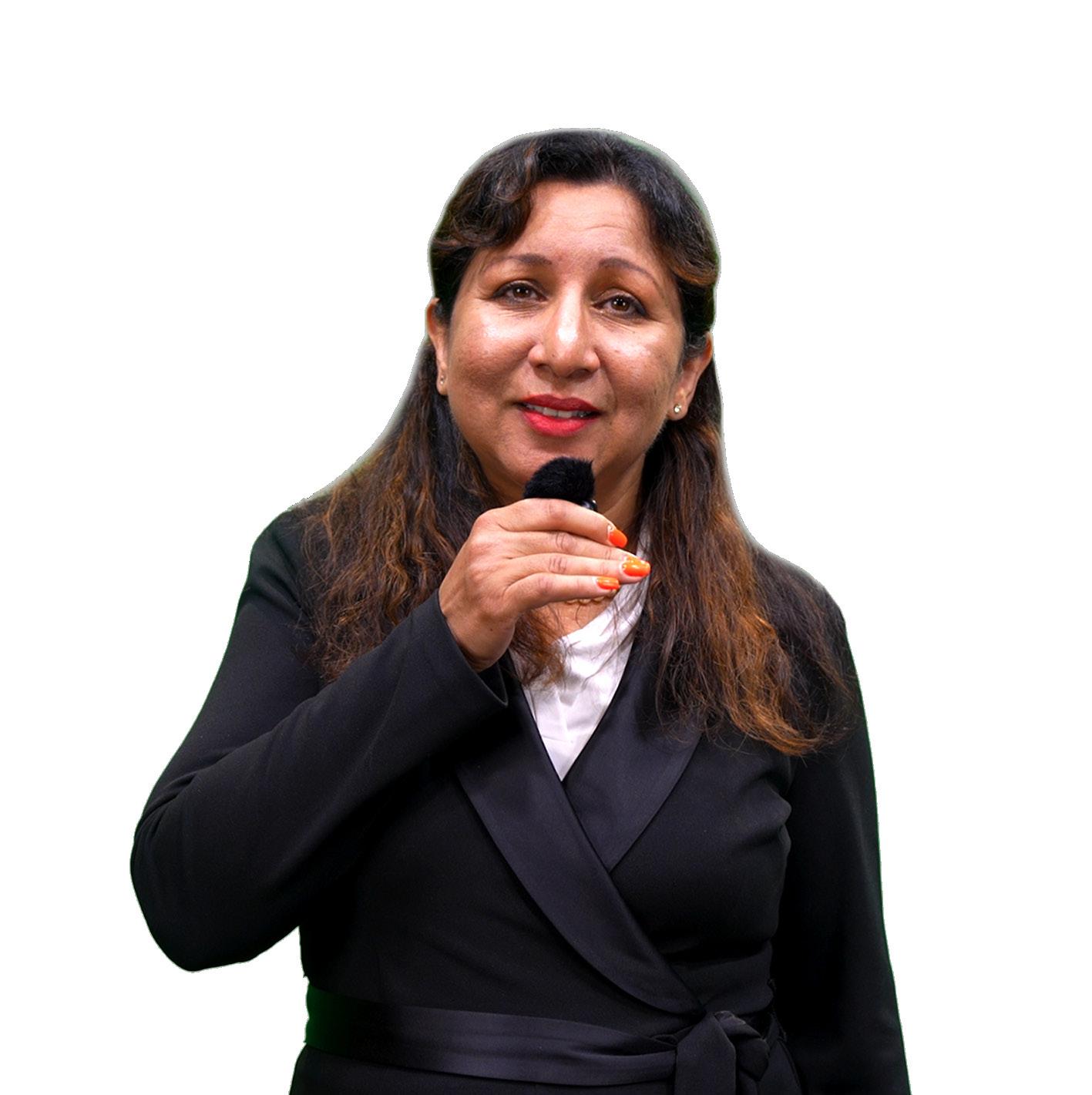

Quad fellow Adhiraj Bhagat contributes to U.S.-India efforts to advance efficient aerospace technologies with civilian, defense and space applications.
BY ZAHOOR HUSSAIN BHAT
Adhiraj Bhagat, a 2024 Indian Quad fellow and Ph.D. student at Georgia Tech’s Ben T. Zinn Combustion Laboratory, is working to make hypersonic flight faster and more efficient. His research focuses on improving supersonic combustion, which could benefit civilian, defense and space exploration sectors. Supersonic refers to speeds faster than the speed of sound (Mach 1), while hypersonic generally refers to speeds above Mach 5. Bhagat’s work focuses on improving supersonic combustion processes, a critical step in enabling hypersonic flight. As a test engineer and student pilot, Bhagat brings valuable real-world experience to his research in aerospace fluids and combustion. His work supports the U.S.-India TRUST (Transforming the Relationship Utilizing Strategic Technology) initiative, which promotes cooperation in critical and emerging technologies. Through the Quad Fellowship, Bhagat joins a new generation of innovators strengthening ties among the Quad countries. He sees his research as part of a shared mission. “The Quad nations are prioritizing space exploration and aviation technologies,” he says. “My project is making transport faster and more efficient and strengthening collaboration in space and defense technology development.” Excerpts from an interview.

Can you briefly describe your research focus in aerospace fluids and combustion? What are the potential applications in civilian and defense sectors?
I study how to stabilize flames in supersonic flows— air moving faster than sound. We take a flow traveling at speeds like a kilometer per second, and in the fractions of milliseconds it spends in a combustor, mix it with fuel and cause very complex chemical reactions to occur, while ensuring the fuel burns efficiently and completely.
Our experiment swirls the air-fuel mixture to anchor a flame without physical flame holders, which current technologies rely on, but which reduce efficiency. Our flame appears as a floating ball of fire. This makes the combustion device more efficient.
This technology could support scramjet engines used in civil aviation, military aircraft and space launches. We’re also exploring whether this qualifies as pressure gain combustion, which may provide significant advantages over current systems.
What are the key scientific or technological challenges you’re addressing through your research?
We’re asking, “How do we make supersonic combustion efficient, reliable and accessible?” High costs and inefficient technology have long restricted this to military use. By addressing these, we’re opening the door to civil and spaceflight applications.
In what ways could your research contribute to advancing the aerospace capabilities of Quad nations, particularly the United States and India?
As a combustion engineer, I see the combustor as the engine’s heart—but it’s just one part of many systems that must work together. If this technology proves useful, it will require a complete engine redesign and the development of new hypersonic vehicles. That kind of work involves collaboration across organizations and countries.
The United States and India are both leaders in aerospace research and are likely to be deeply involved through research institutes or corporate research and development. Many U.S. aerospace companies already operate in India, so collaboration is the key. Organizations like the Indian Space Research Organisation (ISRO), the Defence Research and Development Organisation (DRDO), Hindustan Aeronautics Limited (HAL), and emerging private defense players could also enhance their roles as global contributors.

How has the Quad Fellowship helped you expand your network or thinking around international cooperation in science and technology?
The Quad Fellowship gave me the opportunity to meet policymakers and science advisors in Washington, D.C., many of whom hold Ph.D.s and have transitioned into STEM (science, technology, engineering and mathematics) policy roles. Their experiences showed how technical knowledge can inform international policy cooperation. It also made me reflect on the crucial role of policy in scaling scientific developments.
In aerospace, where innovation is inherently global, policy support is essential for new ideas to have a wide impact.
Given your experience, what policy-level changes or institutional support could better facilitate joint aerospace research and development between India and the United States?
While both India and the United States conduct groundbreaking aerospace research, international collaboration at the institutional or project level remains limited.
Much of aerospace research, like combustion, propulsion, structures and controls, is still in the early development stages. If government bodies and universities support joint projects from the outset, with institutions working in parallel on different aspects, it could pave the way for deeper partnerships as the technology matures. Expanding graduate exchange or study-abroad programs in STEM fields could also help build this bridge.

Bellatrix Aerospace, co-founded by IVLP alumnus Rohan Ganapathy, is expanding into the United States—reflecting how U.S.-India space cooperation drives innovation, trade and strategic alignment.
BY ZAHOOR HUSSAIN BHAT
As the United States and India expand their collaboration on critical and emerging technologies, the space sector has become a key area of bilateral innovation. In line with the 2025 U.S.-India Joint Leaders’ Statement, which committed to strengthening commercial space cooperation, Bellatrix Aerospace exemplifies how high-technology partnerships can promote mutual prosperity and global competitiveness.
The Bengaluru-based firm, co-founded in 2015 by International Visitor Leadership Program (IVLP) alum-
nus Rohan Muralidharan Ganapathy, Yashas Karanam, and three of their college batchmates, develops a full suite of propulsion technologies for a wide range of space missions. Now expanding into the U.S. market with a new subsidiary and manufacturing unit, Bellatrix is advancing commercial space ties between the two countries.
The company recently signed a memorandum of understanding with a leading American satellite manufacturer and is actively exploring additional
partnerships across the U.S. space ecosystem.
“The possibilities for U.S.-India collaboration in the space sector are limitless,” says Ganapathy. “The scope spans satellite technology, exploration and commercial ventures across both business-to-business and business-to-government domains.”
From inspiration to exchanges
Ganapathy developed an early interest in space through childhood stories about astronomy and exploration. This passion deepened during his engineering studies, when he visited the U.S. National Aeronautics and Space Administration (NASA) as part of a student competition. Encounters with American astronauts and exposure to U.S. aerospace leadership inspired him to build a company focused on advanced space technologies in India.
In 2023, Ganapathy participated in the U.S. State Department’s IVLP on U.S.-India commercial space collaboration. The IVLP is the foundational professional exchange program of the U.S. government. It advances U.S. national security priorities and builds long-term relationships between Americans and international leaders in different fields.
The commercial space program provided participants a comprehensive view of the American NewSpace ecosystem—the emerging, innovation-driven commercial space sector—through meetings with federal agencies, state-level innovation hubs, private companies and academic institutions. “What stood out was that every space leader we met was not only driven by passion but also willing to take calculated risks,” says Ganapathy. “This combination has played a major role in enabling the United States to emerge as a global leader in the NewSpace era.”
Ganapathy’s IVLP itinerary included site visits to prominent U.S. space firms, including SpaceX. The program also highlighted the role of agencies like the U.S. Department of State, Department of Commerce and NASA in enabling technology transfer, commercial partnerships and regulatory frameworks that support long-term industry growth. “One of the most valuable takeaways was realizing that space is a domain without borders. In today’s globalized world, collaboration is essential,” he says. “The program highlighted how
global powers can, and must, work together in the space domain.”
These insights sparked his vision for a high-tech platform in India and guided Bellatrix’s global expansion strategy, including its decision to establish operations in the United States.
Bellatrix Aerospace specializes in green chemical propulsion and electric propulsion—two technologies increasingly central to small satellite missions and sustainable space operations. Ganapathy identifies its microwave plasma thruster as one of its distinctive innovations. “This thruster architecture opens the door to using in-situ water resources from the Moon or Mars as propellant, making long-duration interplanetary missions not just possible, but also sustainable,” he describes.
Other systems, including Hall-effect thrusters and heaterless hollow cathodes, are optimized for power efficiency and system longevity.
“When you look at the space propulsion landscape today, much of it is still based on legacy systems, developed years ago for geostationary satellites, where size, weight and power weren’t as constrained,” Ganapathy explains. “But the industry has changed. The rise of Low Earth Orbit (LEO) missions, small satellites and mega-constellations demands a new class of propulsion systems that are compact, efficient and tailored for modern needs.”
That’s where Bellatrix comes in. “We’re not just building for one segment. We offer propulsion systems across the entire spectrum: electric and chemical, from CubeSats to large satellites.”
The company emphasizes vertical integration, designing and building subsystems in-house to reduce production timelines and increase responsiveness to market demands. This end-to-end capability allows Bellatrix to meet the needs of satellite manufacturers seeking compact, customizable and cost-effective propulsion systems.
Ganapathy sees long-term strategic alignment between the United States and India. The United States offers mature infrastructure, strong research institutions, and access to global markets, while India brings technical talent and a cost-effective innovation base. “Together, we complement each other well,” he says, “and have the potential to achieve significant breakthroughs.”
From healthy snacks to festive sweets, American ingredients showcased at AAHAR are bringing more variety and flavor to Indian consumers— strengthening U.S.-India agricultural trade ties.
BY CHARVI ARORA

Below left / Cranberry pulao is one example of how U.S. ingredients are blending with Indian flavors, offering new options for consumers and strengthening U.S.–India food trade ties. / Right / U.S. blueberries lend a vibrant new flavor to Indian favorites like sandwich dhokla (right) and kulfi (far right).


What do blueberry sandesh and cranberry pulao have in common? They are both delicious examples of how food reflects the growing U.S.-India trade ties.
The February 2025 U.S.-India Joint Leaders’ Statement emphasized expanding bilateral agricultural trade as a key priority for both governments. At AAHAR 2025, an international food and hospitality fair in New Delhi, the U.S. Pavilion, organized by the Department of Agriculture’s Foreign Agricultural Service (FAS), was a major highlight. The word “aahar” means food, diet or nourishment.
Jorgan K. Andrews, Chargé d’Affaires, a.i., U.S. Embassy New Delhi, inaugurated the pavilion with the theme “Taste of America 2025.” In his remarks, he highlighted the importance of trade in the U.S.-India bilateral relationship. Over five days, American food producers and trade councils worked together to show how U.S. food and beverage exports are becoming a trusted part of Indian kitchens.
The pavilion featured California almonds, walnuts, pulses, blueberries, cranberries, pecans, as well as U.S. duck and turkey products. These items weren’t just on display. Chefs prepared traditional Indian dishes with them, showing how American ingredients adapt to local culinary preferences.
Fusion dishes were a highlight of the U.S. pavilion, underscoring how American ingredients can integrate seamlessly with Indian culinary traditions. This adapt-
ability is key to deepening market acceptance and expanding trade. Raj Kapoor of the U.S. Highbush Blueberry Council says Indian companies are experimenting with U.S. blueberries—fresh, frozen and dried—in products like blueberry lassi, kaju katli with blueberries, and blueberry kalakand. “We bring blueberries in bulk and supply them to the industry in large quantities so they can test and experiment. Once they are satisfied, they continue to buy from us,” he explains.
Sumit Saran, a longtime promoter of American foods in India, represented the American Pecan Council and the U.S. Cranberry Institute at AAHAR. “Both pecans and cranberries are becoming very popular,” he says, citing increased consumer interest. He highlighted examples like cranberry mithai and cranberry namkeen—classic Indian snacks reimagined with U.S. ingredients—as part of a larger trend toward fusion cooking in Indian homes.
Shiven Khanna, who works with the California Walnut Commission and the U.S. Egg and Poultry Export Council, emphasizes how regional Indian dishes are incorporating American elements.
“India has a range of regional preferences, and we see that American ingredients fit in well,” he says, pointing to new creations like turkey biryani. He also noted walnuts’ longstanding role in Indian sweets, such as California walnut halwa, reinforcing their natural fit in local recipes.
U.S. exhibitors didn’t just offer ingredients— they also demonstrated possibilities. At the pavilion,
American blueberries were featured in dishes like blueberry kulfi, nankhatai, suji halwa, and even a blueberry dhokla, demonstrating the versatility of U.S. produce in familiar Indian formats.
Cranberries were equally prominent, appearing in laddoo, modak, papdi chaat and khandvi. Even the classic thandai got a twist with cranberry milk thandai, while desserts such as cranberry mango kulfi and cranberry coconut kulfi attracted attention for their inventive blend of flavors. These examples showed how U.S. ingredients can support both tradition and innovation.
The growing presence of U.S. agricultural products in Indian kitchens reflects more than evolving tastes— it signals a deeper economic partnership. As outlined in the February 2025 U.S.-India Joint Leaders’ Statement, both governments reaffirmed their commitment to strengthening agricultural trade. Events like AAHAR bring that commitment to life by creating platforms for U.S. producers and Indian businesses to collaborate, exchange ideas and adapt to changing consumer demands.
“Building stronger and more resilient trade ties is essential,” says Saran, emphasizing that such fairs support innovation, investment and job creation. “The world of food is beautifully interconnected,” he adds.
In the 2023 financial year, the United States ex-
India has a range of regional preferences, and we see that American ingredients fit in well.
ported approximately $1.8 billion worth of agricultural and related products to India, according to the U.S. Department of Agriculture. Tree nuts, pulses and fresh fruits are among the top U.S. agriculture export prospects to India, according to a USDA International Agricultural Trade Report.
Sachin Khurana, India representative of the USA Dry Pea & Lentil Council, echoes this view: “Taste of America has been brilliant for us. The campaign helps bring the whole U.S. commodity sector together under one umbrella. We’re very proud of American farmers and the sustainable crops they grow. Campaigns like this help us present a unified front and expand our presence in India.”
From healthy snacking to festive sweets, American ingredients give Indian consumers greater variety and flavor while helping U.S. producers reach new markets. As bilateral trade deepens, the role of food in diplomacy and commerce continues to grow.


U.S. speaker Thomas Lograsso’s India visit advanced COMPACT and TRUST goals through critical minerals talks—linking research, industry and policy to boost U.S.-India tech and supply chain ties.
BY GIRIRAJ AGARWAL
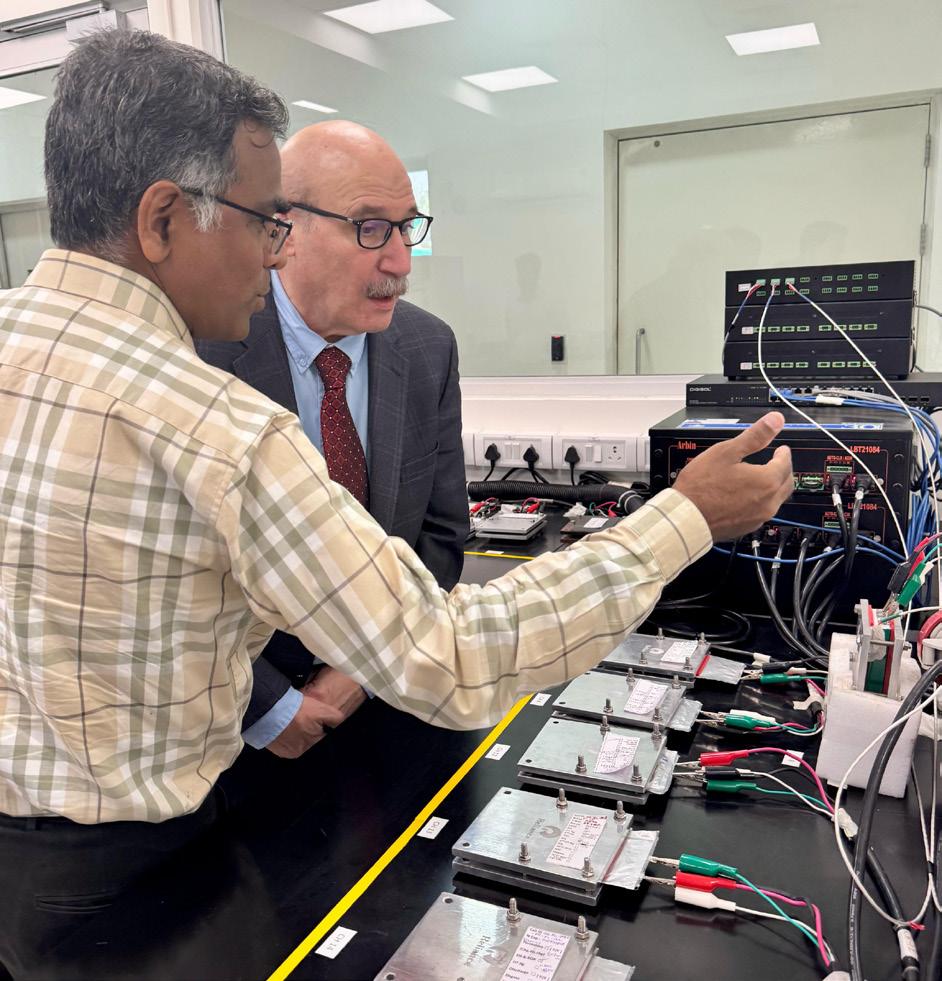
Thomas Lograsso, a materials scientist, is the director of the Critical Materials Innovation Hub (CMI), a U.S. Department of Energy Innovation Hub led by Ames National Laboratory. He co-invented a rare-earth free-substitute for Terfenol-D, an important alloy used in high-precision machining operations. In late February and early March 2025, Lograsso visited Pune, Mumbai, Chennai and Bengaluru as part of the U.S. Speaker Program to discuss secure and resilient global supply chains, technology commercialization and Ames Lab partnerships.
Lograsso’s visit and interactions advanced key U.S.-India initiatives, including COMPACT (Catalyzing Opportunities for Military Partnership, Accelerated Commerce & Technology) and TRUST (Transforming the Relationship Utilizing Strategic Technology), while strengthening bilateral collaboration on critical minerals, advanced technologies and supply chain resilience.
Lograsso underscored the pressing global need for sustainable supply chains for critical minerals and highlighted the important role that U.S.-India cooperation can play in securing these resources. “Access to critical minerals is essential for technological advancement and economic security. Our cooperation with India will strengthen supply chains, foster innovation, and support industries that drive growth and resilience in both our nations,” he says.
Lograsso’s visit outlined a roadmap for future cooperation, including plans to launch a bidirectional student exchange program and establish a lab-to-lab agreement between Iowa State University, the Ames National Laboratory’s Critical Materials Innovation Hub, and Indian institutions. The visit also featured high-level discussions with executives from leading Indian conglomerates, forming partnerships to develop and license technologies aimed at improving the efficiency of critical mineral supply chains supporting both prosperity and security.
Excerpts from an interview.
Access to critical minerals is essential for technological advancement and economic security. U.S.-India cooperation will strengthen supply chains, foster innovation and support industries in both nations.
What is your assessment of critical material science research over the past decade and what are the challenges?
In the past decade, research in critical material science has made significant progress. The Materials Genome Initiative (MGI) has accelerated the discovery of new materials by leveraging artificial intelligence (AI) and open-source methods. This has led to breakthroughs in advanced alloys and biomaterials, which are used in industries such as aerospace and health care. Innovations in energy storage, like improved lithium-ion batteries, have made energy systems more efficient. Nanotechnology has enabled the development of materials with novel properties, like increased strength.
AI is also playing a growing role—accelerating material discovery, optimizing manufacturing, and enabling predictive maintenance by modeling behaviors and analyzing large datasets.
Despite these achievements, challenges remain. Geopolitical tensions and natural disasters can disrupt critical material supply chains. It’s important to ensure a stable supply.
How are the United States and India collaborating on critical material research and development?

The United States and India have launched several initiatives to strengthen collaboration in critical material research, especially in sectors like semiconductors. The TRUST initiative enhances cooperation in recovering and processing critical minerals like lithium. The Advanced Materials R&D Forum expands collaboration between U.S. and Indian universities and researchers.
These efforts promote innovation by combining expertise and resources, while also helping diversify supply chains and reduce dependence on single sources. Strengthening research and development partnerships also boosts economic growth by creating high-quality jobs and promoting technological advancements.
What is the role of the Critical Materials Innovation Hub, and what are its major accomplishments?
The CMI Hub addresses challenges related to critical materials, which are essential for national security. It focuses on innovative solutions to develop resilient and secure supply chains for rare earth metals and other critical materials. The Hub addresses challenges across the materials lifecycle through collaborations with laboratories, universities and industry.

The CMI Hub has developed energy-efficient technologies like membrane solvent extraction for recovering rare earth metals. It has secured 50 U.S. patents, 202 invention disclosures and licensed 50 technologies. The Hub has won 12 R&D 100 Awards and produced 635 peer-reviewed papers. Over 400 students and postdoctoral scholars have participated in the Hub, with many advancing to careers in government, industry and academia.
Why is supply chain diversification for critical materials a priority now?
Relying on a single country or region for critical materials makes supply chains vulnerable to geopolitical conflicts, trade restrictions and natural disasters.
Events like the COVID-19 pandemic and natural disasters can disrupt supply chains, causing delays and shortages. Diversifying supply chains ensures that alternative sources are available, which helps mitigate these risks. It also enhances economic stability by reducing the impact of disruptions on industries and economies.
You visited India recently and interacted with
different audiences. What were your key takeaways from the trip?
During my recent visits to Pune, Mumbai, Chennai and Bengaluru, interactions with different audiences highlighted the importance of collaboration and knowledge-sharing between U.S. and Indian institutions. The visits underscored the importance of collaboration, sustainability, and workforce development, particularly through educational programs. The discussions also underscored the potential for joint efforts to address global material challenges and drive innovation in critical technologies.
Is the Ames Lab collaborating with any Indian institutions?
Ames Lab partners with industry, academia and other entities to move early-stage research toward commercialization. Programs like Cooperative Research & Development Agreements (CRADA) and Strategic Partnership Projects (SPP) support these efforts. While specific partnerships with Indian institutions were not highlighted, Ames Lab remains open to international collaborations and hosts visiting professionals through the Personnel Exchange Program.

Nexus-trained Space Philic is developing cost-effective reusable launch tech, aligning with U.S.-India goals under COMPACT and TRUST to strengthen innovation and space access.
BY SYED SULAIMAN AKHTAR
Trained at the U.S. Embassy’s Nexus Startup Hub, Kanpur-based Space Philic is developing next-generation reusable launch vehicles to expand access to space. The company specializes in designing and launching reusable launch vehicles (RLVs) to make space exploration more efficient, sustainable and affordable. Founded by Indra Narayan Chaudhary, Space Philic is also exploring collaboration opportunities in space technology.
This vision of collaborative, accessible space innovation aligns with U.S.-India priorities under the COMPACT (Catalyzing Opportunities for Military Partnership, Accelerated Commerce & Technology) and TRUST (Transforming the Relationship Utilizing Strategic Technology) frameworks to foster joint innovation in advanced space technologies.
In the February 2025 U.S.-India Joint Leaders’
The RUPAK Launch Vehicle’s compact design allows for easy transport and deployment across different geographic locations.
Statement, President Donald Trump and Prime Minister Narendra Modi committed to further commercial space collaboration through industry engagements in conventional and emerging areas, such as connectivity, advanced spaceflight, satellite and space launch systems, space sustainability, space tourism and advanced space manufacturing.
Supporting these collaborative goals is Space Philic’s flagship innovation—the RUPAK Launch Vehicle, which achieved a major milestone in September 2024 with its successful testing and deployment.
Designed as a dual-use system, RUPAK supports a wide range of applications. “It can deploy small satellites into various orbits to support civilian needs such as telecommunications, Earth observation, environmental monitoring and scientific research,” says Chaudhary. “This versatility makes it a practical option for both commercial space companies and government space agencies. In addition, the vehicle can carry small defense payloads and position them in orbit for controlled deorbiting and precise deployment when required.”
The RUPAK Launch Vehicle’s first stage uses vertical takeoff and landing (VTVL) technology. This VTVL feature enables reuse, quick recovery and refurbishment—lowering launch costs and enabling frequent, efficient missions.
“RUPAK’s compact design allows for easy transport and deployment across different geographic locations, including unconventional or mobile launch sites,” says

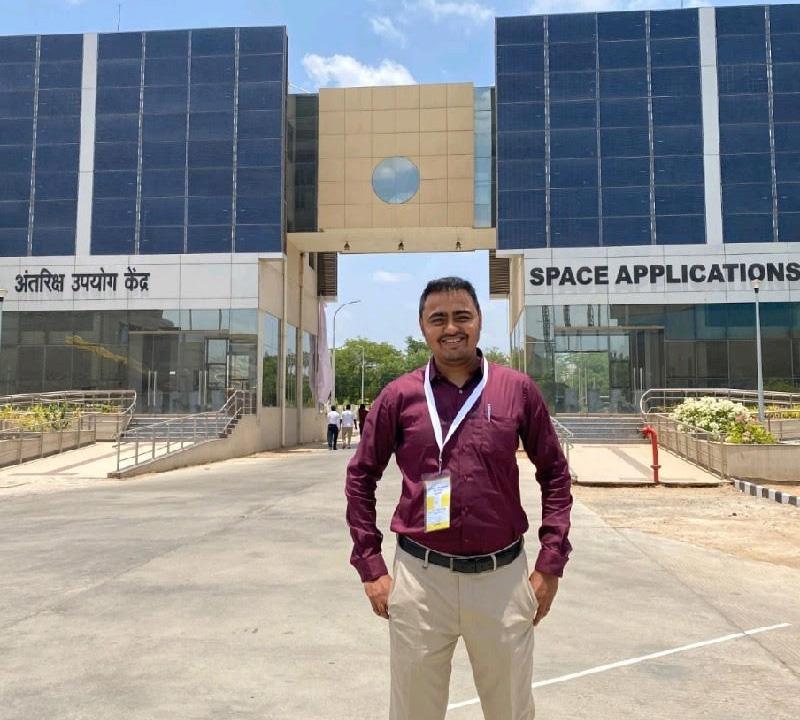
Chaudhary. While traditional missions take years to prepare, RUPAK cuts timelines to months or weeks. Its quick turnaround time makes it suitable for dynamic, time-sensitive missions that require fast deployment. “The vehicle can be fully assembled and ready for launch within 72 hours. Military and disaster response teams can benefit from this capability,” he adds.
Beyond its technical features, RUPAK’s development reflects a broader shift in how countries and institutions are approaching space access. Chaudhary explains that RUPAK is more than just hardware. It supports the democratization of space by enabling affordable access for start-ups, universities and emerging space nations.
“Incubators, research partners and international space agencies are showing increasing interest in RUPAK, which is establishing the groundwork for a new class of space missions that are accessible and responsible,” he says. The start-up is also working toward developing scalable space technologies in India with the aim of enabling human space missions to orbit and beyond.
This vision for scalable innovation fits within a broader context of growing U.S.-India cooperation in the space sector—an area where Space Philic hopes to
contribute meaningfully.
“Space Philic has the potential to be a key player in U.S.-India space and defense collaborations, contributing cost-effective, innovative solutions that can advance both nations’ shared goals in space and defense,” Chaudhary notes. He sees strong prospects for joint ventures, advanced propulsion collaboration, and AI-based mission planning over the next decade. Public-private partnerships will also play a crucial role, combining governmental support with the innovation and efficiency of the private sector. “For Space Philic, public-private partnerships can facilitate the operation of space assets in collaboration with U.S. entities, enabling us to leverage advanced technologies and infrastructure,” says Chaudhary.
Much of Space Philic’s strategic growth has been shaped by its experience at the U.S. Embassy’s Nexus Startup Hub. “Our time at Nexus has played a pivotal role in shaping Space Philic’s growth and innovation strategy,” Chaudhary says, adding, “We explored how to align our products and services with real-world needs, ensuring we focus on use cases that resonate with a wide range of clients, from academic institutions to private satellite operators.” This support strengthened the company’s market readiness and long-term planning. “Thanks to Nexus,” says Chaudhary, “Space Philic is better positioned than ever to bring RUPAK-RLV to the market and contribute to the global space ecosystem.”
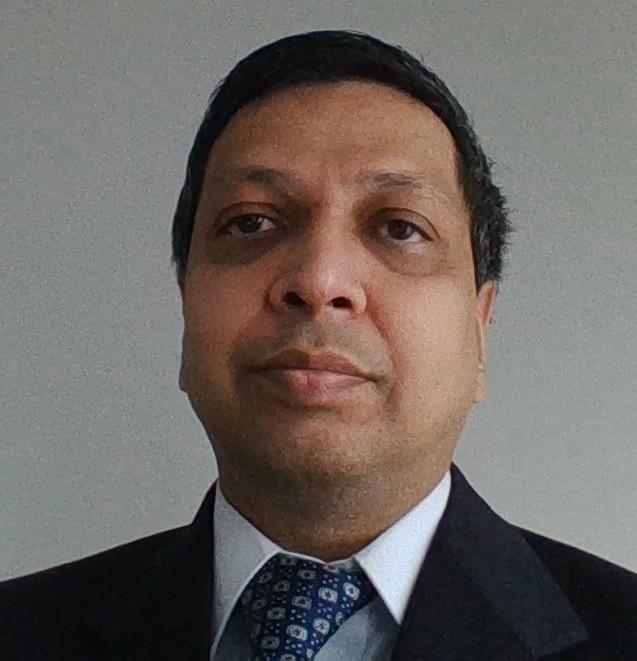
ANASA scientist Rajat Bindlish discusses how NISAR will advance Earth observation and measure complex natural processes, strengthening U.S.-India scientific collaboration.
BY ZAHOOR HUSSAIN BHAT
ccurate satellite data helps communities prepare for disasters, plan agriculture and understand extreme weather impacts. Rajat Bindlish plays a key role in making this possible. As a research physical scientist at the U.S. National Aeronautics and Space Administration’s (NASA) Goddard Space Flight Center, Bindlish is a part of the NASA-ISRO Synthetic Aperture Radar (NISAR) mission—an Earth-observing satellite jointly developed by NASA and the Indian Space Research Organisation (ISRO). It is scheduled to launch from India later this year.
The NISAR mission marks the first time the two agencies have collaborated on hardware development for an Earth-observing mission. NISAR will observe and measure some of the planet’s most complex natural processes, helping the United States and India work together to combat the impact of weather and other global challenges.
In the February 2025 U.S.-India Joint Leaders’ Statement, President Donald Trump and Prime Minister Narendra Modi hailed 2025 as a pioneering year for U.S.-India civil space cooperation.
They highlighted NISAR as the first of its kind to systematically map changes to the Earth’s surface using dual radars.
“NISAR is the most advanced L-band and S-band synthetic aperture radar satellite developed,” says
Bindlish. It will provide observations on average every six days, with a spatial resolution of under 10 meters. The satellite will measure land deformation caused by natural hazards, track glacier and ice sheet changes, and monitor forest and wetland dynamics to support science and disaster response.
“The ability to observe these events from space is crucial for national security,” Bindlish adds. NISAR’s rapid, global coverage will enable timely pre- and post-disaster observations, helping assess damage and guide response efforts—strengthening U.S. and Indian efforts to protect lives, livelihoods and ecosystems.
An alumnus of the Indian Institute of Technology Bombay and The Pennsylvania State University, Bindlish came to the United States for graduate studies in civil engineering with a specialization in hydrology. “As part of my research, I used remote sensing observations, which became a continued focus during my time at the USDA’s Agricultural Research Service (ARS) and now at NASA,” he says.
His early exposure to remote sensing shaped his continued focus on Earth observation. In addition to the NISAR mission, Bindlish also serves as the deputy project scientist for NASA’s Soil Moisture Active Passive (SMAP) mission, an Earth satellite that measures water content in Earth’s surface soil, to better understand terrestrial water, carbon and energy cycles.
The NISAR mission aims to understand the “dynamics of moisture in the soil and carbon storage in vegetation, improve the knowledge of earthquakes, volcanic eruptions and landslides,” Bindlish explains. “It will provide information about vegetation stress and irrigation, which will help enhance agricultural monitoring capabilities in support of food security.”
Elaborating on the importance of soil moisture, Bindlish explains that it plays an important role in forecasting droughts and floods, monitoring crops, managing water supply and understanding land surface hydrology. It also guides irrigation planning—adequate soil moisture supports healthy root growth and nutrient absorption, which leads to better yields and improved crop productivity.
NISAR will use L-band radar to estimate soil moisture. “L-band radar can see through clouds and vegetation, making it especially useful for measuring moisture in the top layer of soil,” explains Bindlish. The radar signal changes depending on how wet or dry the soil is, a result of how the soil stores and transmits electrical energy. Scientists must also account for the vegetation’s influence on the signal to retrieve accurate soil
moisture data. This helps scientists to assess moisture levels even when the ground is covered by plants.
Bindlish’s work on missions like SMAP has uniquely positioned him to work on the NISAR project. “I have been involved with the SMAP mission since its inception, helping develop and validate the soil moisture algorithm,” he says. “As SMAP’s deputy project scientist, my responsibilities include operational decisions about the satellite, development of soil moisture products, science results from the mission and applications.”
These responsibilities have enabled him to contribute to the NISAR soil moisture algorithm and its use for various applications. He has also worked closely with the U.S. Department of Agriculture on the use of SMAP observations to guide farmers. “I aim to transition these applications to my work on NISAR,” notes Bindlish.
In addition to advancing scientific research, Bindlish values the opportunity to foster international collaboration. He considers working with ISRO scientists on NISAR a privilege. “The United States and India both have strong and very capable space agencies,” he notes. “Earth science observations need to be made on a global scale to fully understand the complex water, energy and carbon cycle processes. It is important for these space agencies to work together for the benefit of humankind by advancing our knowledge of our planet.”

At the American Center New Delhi, the Space Experiential Learning Center equips students with hands-on STEM skills—drawing on U.S. innovation and expertise to advance global leadership in space science.
BY CHARVI ARORA
Space exploration has traditionally been the domain of astronauts and scientists—but that’s changing. With the right tools and opportunities, today students can also gain hands-on exposure to technologies shaping the future of aerospace exploration. The Space Experiential Learning Center (SELC) at the American Center New Delhi is helping make that happen. Through early access to cutting-edge innovations, SELC helps participants turn their interest in space into real skills and career
paths. The center attracts a wide audience—students, educators, families and space enthusiasts alike.
The February 2025 U.S.-India Joint Leaders’ Statement hailed 2025 as a pioneering year for U.S.-India civil space cooperation, with the Axiom Mission to bring the first Indian astronaut to the International Space Station, and launch of the joint NISAR mission, the first of its kind to systematically map changes to the Earth’s surface using dual radar technology.
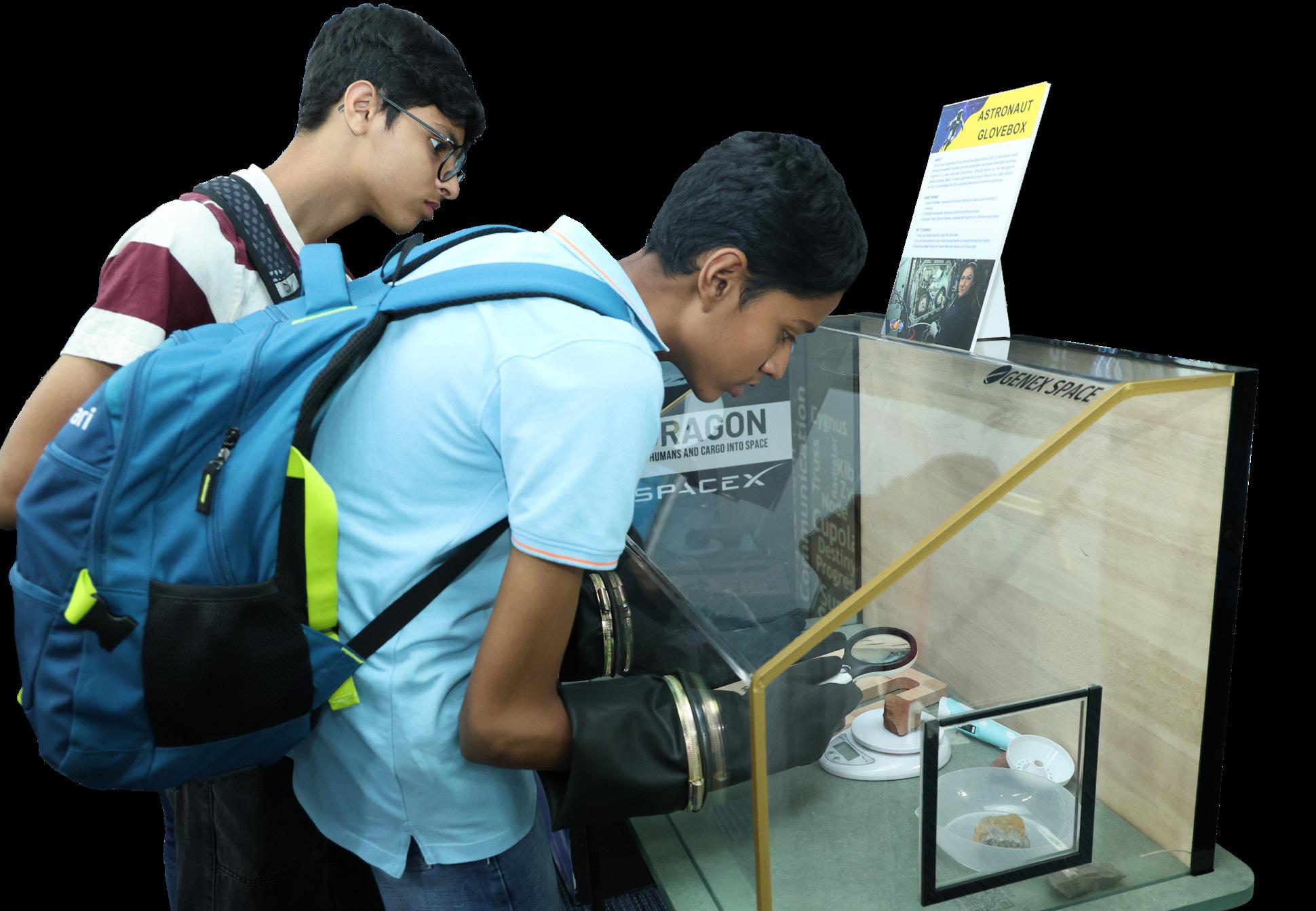
programs like the SELC are shaping the aspirations of young Indian learners. “I joined this program because I want to be an astrophysicist and it connects both the theoretical and the practical aspects of space science,” says Nandika Taneja, a participant at the SELC.
A joint initiative by the American Center New Delhi, the Indo-U.S. Science and Technology Forum (IUSSTF) and Genex Space, the SELC shows how U.S.-India collaboration in space can spark curiosity and learning among young people. IUSSTF is an autonomous bilateral organization fostering collaboration between India and the United States in science, technology and innovation. Genex Space is a non-governmental organization focused on space education and outreach.
At the launch event on April 15, space scientist and former chairman of the Indian Space Research Organisation (ISRO), A.S. Kiran Kumar complimented the U.S. Embassy for “taking this initiative of providing a number of young students [an opportunity] to go through this experiential learning and showcase to them the challenges that lie ahead.”
SELC’s appeal lies in experiences that go beyond the classroom. Students don’t just read about space— they experience it. One of the key features is the Space and Astronomy Club. This year-long immersive program will include skill-building workshops, handson training, virtual and physical classroom sessions and sky-gazing camps for a cohort of 60 participants on space science, astronomy and satellite technology. “Students get the chance to engage with space challenges, applying what they learn in practical ways,” explains Chaitali Bhattacharya, principal science officer at IUSSTF.
The SELC brings science to life by engaging participants in interactive activities. “The center ensures that they are not just passive learners,” says Priya Thomas, program manager at IUSSTF. “They develop problem-solving skills, critical thinking and teamwork—essential attributes for future space professionals.”
The center features interactive exhibits and portable telescopes, like the BRESSER AC 90/500 Messier Nano AZr and the GSO 6-inch DOB. It also includes scale models of the Falcon 9 rocket and various satellites. Visitors can operate a docking simulator modeled on the International Space Station, experiencing firsthand the precision required to guide a space capsule into position.
SELC’s appeal lies in experiences that go beyond the classroom. Students don’t just read about space—they experience it.
For many participants, the SELC is more than just a training hub—it’s a launchpad for their dreams. “I wish to learn more about mission design,” says Sridhar Sharma. “More space missions are being launched each year, many involving human crews. I’m looking forward to practical learning that connects directly to real-world applications of space science.”
To support this kind of ambition, the SELC incorporates both visual and historical learning tools. It houses a photo wall museum showcasing key moments in the U.S.-India collaboration in space science and the history of space exploration. The astronomy section features models of planetary systems, Moon phases and ancient astronomy tools, including a sundial, armillary sphere and a sextant. Bhattacharya says these tools “make complex scientific concepts engaging and easy to grasp.”
But inspiration alone isn’t enough—students also need opportunities to apply what they learn. That’s why SELC focuses on bridging the gap between academic knowledge and hands-on experience. Students interact directly with professionals from the field and gain expert insights. “They learn about deep space objects like galaxies, nebulae and star clusters as well as rocket technology, launch stages and satellite deployment,” says Bhattacharya.
These opportunities can help students pursue passions sparked by early role models. For Shivika Singhal, it was American astronomer Jill Tarter who ignited her interest in astronomy, which ultimately led her to join the SELC. “I’m really excited to see what this program is going to be about,” she says, “and how we are going to explore the aspects of space.”
Using patented AI tools to detect stealthy, memory-based cyber threats, Nexus-trained Matisoft is advancing next-gen cybersecurity while promoting economic prosperity through safer digital infrastructure.
BY SYED SULAIMAN AKHTAR
Matisoft Cyber Security Labs, a deep-tech cybersecurity start-up founded at IIT Delhi, is contributing to shared U.S.-India priorities in critical and emerging technologies—an area emphasized in the 2025 U.S.India Joint Leaders’ Statement. Founded by Varun Seth, the company develops artificial intelligence (AI)-driven tools that mimic human analyst decisionmaking to detect and neutralize sophisticated threats like memory-resident malware, advanced persistent threats and fileless attacks. Its U.S.-patented, realtime technology works without internet connectivity, making it well-suited for securing sensitive systems in government, defense and critical infrastructure. An alumnus of the U.S. Embassy New Delhi’s Nexus Startup Hub, Matisoft credits the program with shaping its global outlook. Nexus connects start-ups, innovators and investors, providing mentorship, funding opportunities, and exposure to international markets. Excerpts from an interview with Seth.
How does Matisoft see its role in advancing U.S.-India cooperation on cybersecurity and critical technologies?
Matisoft aims to serve as a bridge for collaborative innovation in cybersecurity by sharing advanced research, co-developing secure systems, and contributing to supply chain resilience. We see strong potential in partnering with U.S. stakeholders to jointly build trustworthy, AI-driven threat protection tools for critical infrastructure and defense.
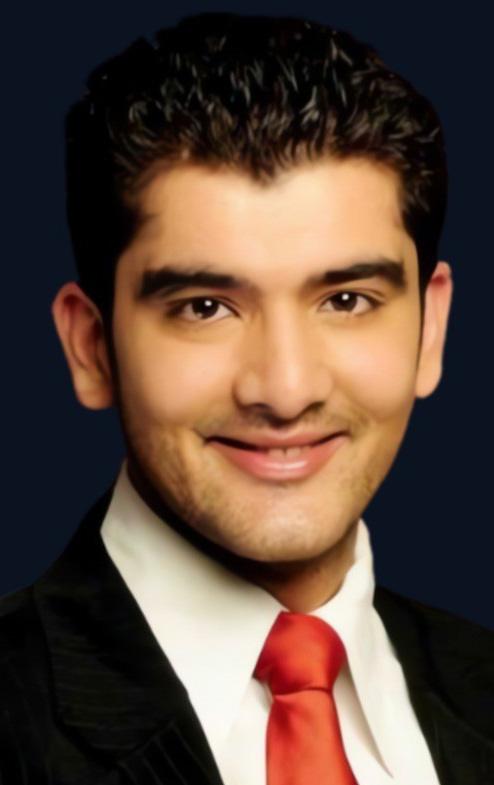
With the U.S. and India deepening collaboration on advanced digital infrastructure and AI-enabled defense systems, what opportunities do you see for bilateral innovation in areas like memory-based threat detection or secure endpoint solutions?
There’s enormous potential for joint development in areas like behavior-based threat intelligence, AI-assisted malware analysis, and secure firmware monitoring. We’re especially excited about using generative AI for memory-based detection, where conventional approaches often fall short. By combining U.S. strengths in defense-grade systems with India’s agility in software innovation, we can co-create solutions that are lean, interoperable and battle-tested.
What impact did your experience at the Nexus Startup Hub have on your product strategy and expansion?
The Nexus program was instrumental in our growth. It gave us access to world-class mentorship, validation from U.S. stakeholders, and a platform to refine our go-to-market strategy. More than that, it opened doors for collaborations and helped us position our technology for international markets. It accelerated our learning curve and gave us early credibility, which was invaluable for expanding globally.
What makes Matisoft’s Advanced Malware Scanner different from traditional antivirus and Endpoint Detection and Response (EDR) tools, particularly in
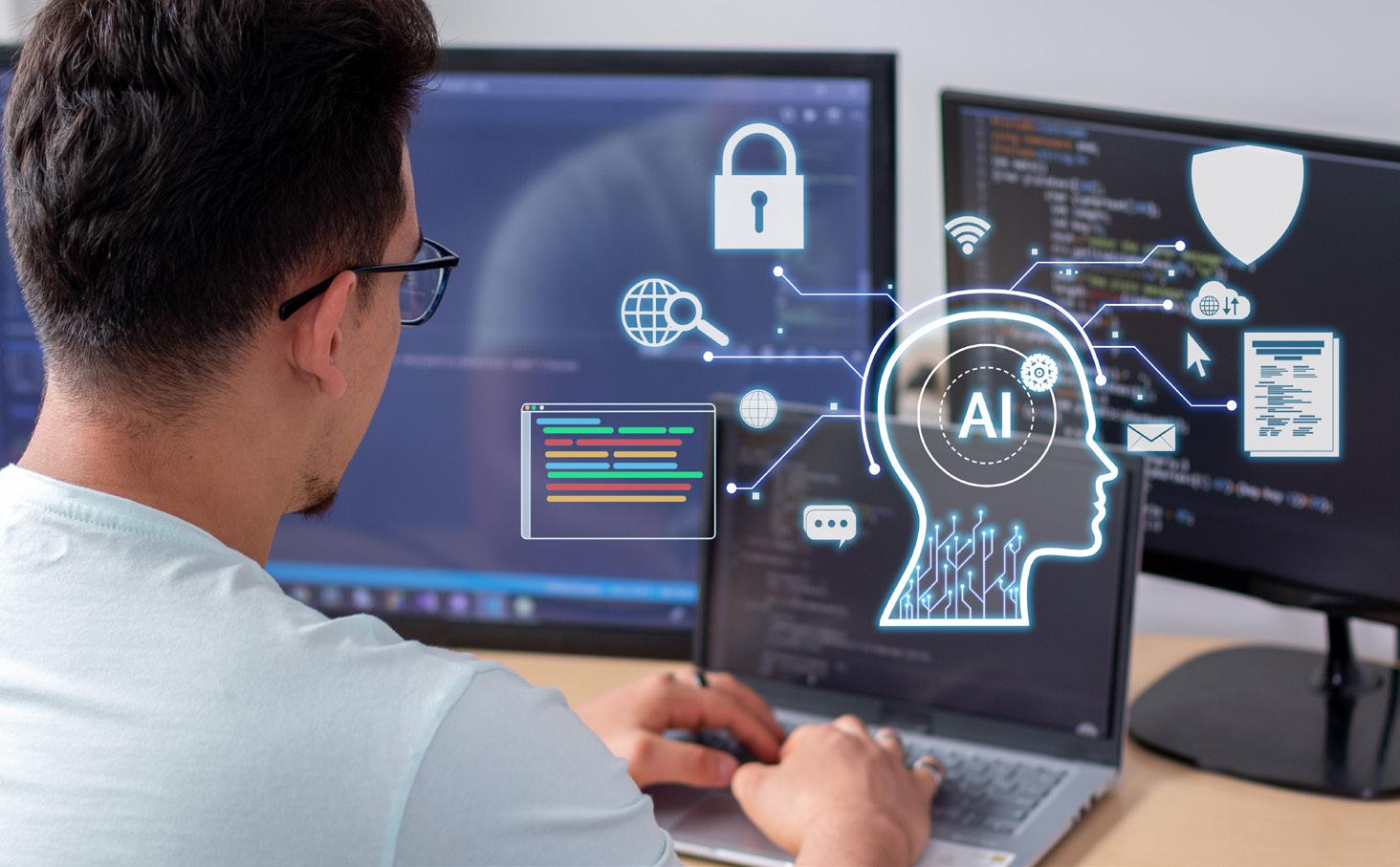
how it mimics a human analyst’s decision-making?
Unlike signature- or heuristic-based tools, which rely on known malware patterns or preset rules, Matisoft’s scanner replicates the step-by-step logic of a human malware analyst—tracking suspicious memory behavior, execution flow and fileless patterns. It doesn’t rely on internet connectivity or cloud lookups, making it ideal for air-gapped and sensitive environments.
How does your lightweight scanner work alongside existing cybersecurity frameworks without creating operational friction or redundancy?
Our scanner is agent-based, modular and resource-efficient—designed to integrate seamlessly into layered defense architectures. It complements existing security tools like security information and event management systems, antivirus software and EDRs by adding a memory-level inspection layer, which they often lack. This makes it particularly effective in detecting advanced persistent threats without duplicating existing functions or overloading systems.
With cyber threats constantly evolving, especially memory-based attacks, how does Matisoft anticipate and adapt to new tactics?
We’ve built a reverse-engineering and threat research team that monitors global malware trends in real time. Our detection models are updated continuously based on field data, honeypots and internal simulations. Since memory-based attacks evolve quickly,
we take a proactive approach—constantly testing and refining our detection logic using live threat scenarios and offensive techniques.
What are the biggest misconceptions organizations still have about modern cyberattacks, and how should they shift their thinking?
Many organizations still believe that antivirus or EDR solutions are enough to protect them. The reality is that most advanced attacks are fileless components that reside in memory and often mimic legitimate activity. The misconception is that if something isn’t noisy or persistent, it isn’t dangerous. We encourage organizations to move beyond just guarding the outer defenses and start monitoring what’s happening inside their systems in real time, focusing on how programs behave.
As Matisoft grows globally, what’s your vision for its role in shaping next-generation cybersecurity practices?
Our vision is to create tools that think like human defenders—fast, intuitive and precise. As we scale, we aim to shape a new generation of cybersecurity practices that are more adaptive, less reliant on predefined rules, and focused on deep memory inspection. Our goal is to build security that doesn’t just detect threats, but understands them. We want to lead the way in proactive threat hunting, where AI-driven endpoint intelligence becomes the first and most reliable line of defense.
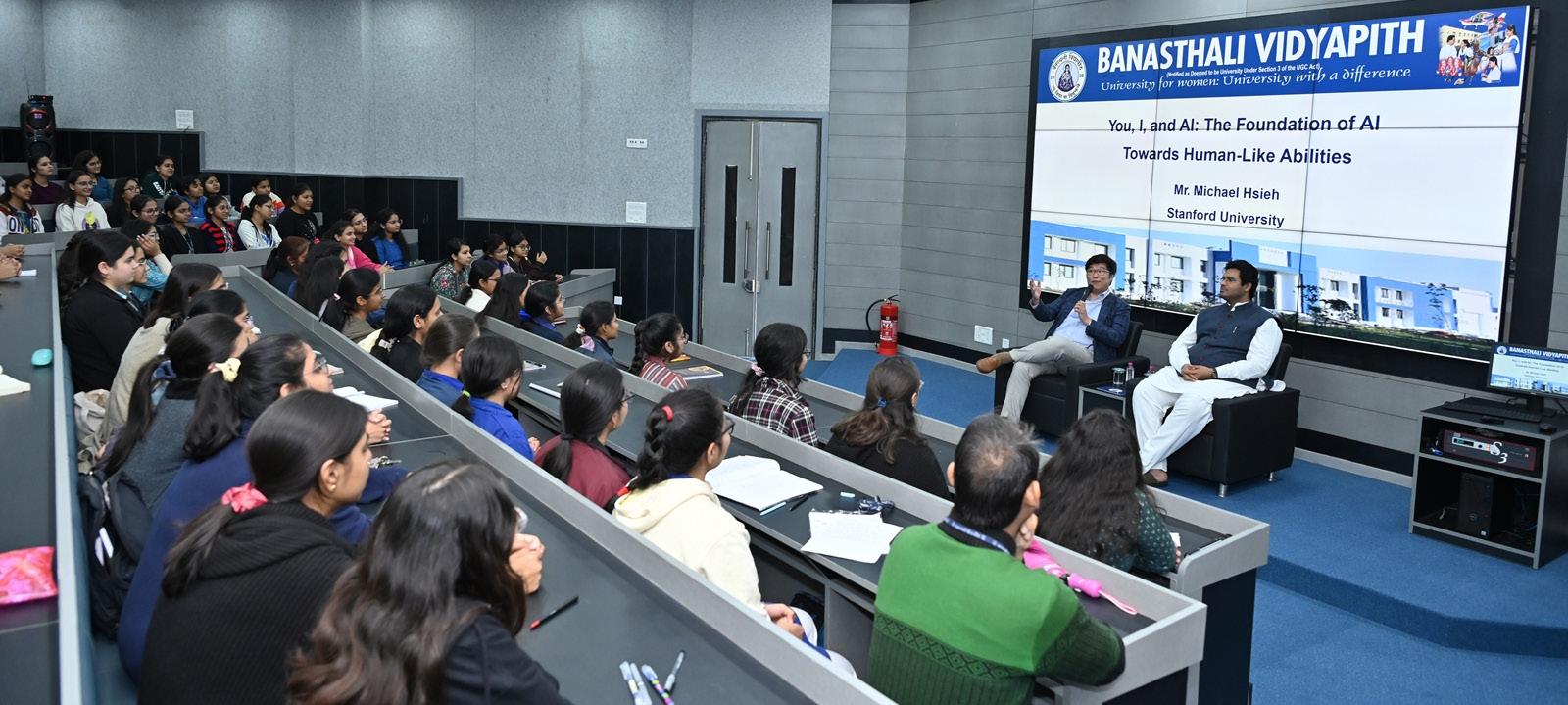
U.S. speaker Michael Hsieh, an AI and cybersecurity expert, explores machine learning trends and their role in advancing U.S.-India cooperation and broader benefits for society.
BY GIRIRAJ AGARWAL
Artificial intelligence (AI) expert Michael Hsieh is a nonresident fellow at the Center for International Security and Cooperation at Stanford University, where he focuses on the impact of technology on various aspects of public interest. Hsieh is an expert in quantum computation and its implications for cybersecurity, the economy and AI, including machine learning. He previously served as executive director of the Transformative Cyber Innovation Lab and as a program manager at the Defense Advanced Research Projects Agency, a U.S. Department of Defense agency responsible for developing emerging technologies for military use. His work at the intersection of research, national security and emerging technologies offers valuable perspectives on global technology partnerships. In February 2025, President Donald Trump and Prime Minister Narendra Modi announced the launch of the U.S.-India TRUST (Transforming the Relationship Utilizing Strategic Technology) initiative. This major effort aims to catalyze government-to-government, academic and private sector collaboration on critical and emerging technologies, including AI. As a central pillar of TRUST, the leaders committed to developing a U.S.-India Roadmap on Accelerating AI Infrastructure by the end of the year.
Hsieh’s background in cybersecurity policy and AI innovation closely aligns with the TRUST initiative’s goals. His experience working at the nexus of government, research and technology places him in a strong position to evaluate how U.S.-India cooperation can support cutting-edge AI development, data governance and cross-border innovation. Excerpts from an interview.
What potential AI collaborations between the United States and India could strengthen both countries?
What sets the United States and India apart as technology leaders is their exceptional strength in basic research and development. A leading U.S. AI expert recently noted that most available data has already been exhausted, and future breakthroughs will require fresh, original thinking. At this stage, innovation must be fueled by advanced research and development capabilities—an area where both the United States and India excel. Strengthening collaboration between them could create a synergistic “two plus two equals five” effect, where combined efforts produce outcomes greater than the sum of their parts.
What are your thoughts on the initiatives taken by both countries on AI?
A key advantage of U.S.-India collaboration is its potential to deepen over time. The strong people-to-people relationship between the United States and India is one of the key factors driving our good collaboration. We exchange ideas and leverage our innovation assets. The history of 20th-century technology shows that great advancements don’t occur by accident. The Internet, for instance, began as a U.S. Department of Defense project. Many of the present AI models came from very focused investments by forward-looking government policies. Given this context, both the United States and India recognize the importance of being world leaders, rather than followers, in this area.
What initiatives did you take as part of the Cyber-Enabled Economic Warfare Advisory Group at the think tank, Foundation for Defense of Democracies?
At that time—and this remains true today—we recognized that economic security is a key component of national security. Both recent and historical evidence show that the most advanced technological power often leads in geopolitics. In the 21st century, the United States faces competitors who are innovating rapidly. Our goal was to meet this challenge with creativity. We coordinated technology, investment and national security policies to ensure that the United States maintains its technological lead.
Could you share your experience engaging with different audiences in India on the opportunities that AI presents?
I’ve had the privilege of engaging with students and faculty from top technical universities, including the Indian Institutes of Technology. It was an exciting experience, as the universality of science is what makes it so compelling. I also had the opportunity to engage with members of India’s creative community, which was equally fascinating. Before arriving in Delhi, I had the privilege of visiting some of Jaipur’s remarkable astronomical observatories and royal palaces. What stood out most was the example of rulers who used state resources not only to advance knowledge but also to explore the fundamental truths of the universe. These kings, who were also astronomers, built instruments that continue to measure time with an accuracy of up to two seconds.
What kinds of questions did the tech students and AI innovators ask during your discussions with them?
Technical students expressed understandable concerns about AI potentially replacing jobs. We discussed the rapid pace of AI development, which has advanced so quickly that just a year ago, I was more pessimistic about AI’s ability to write high-quality computer code.
However, the past three to six months have shown how rapidly the field is evolving, leading me to revise my view. Colleagues and contacts in the innovation and investment communities tell me that the role of the junior software developer, as it existed in the 20th century, is likely to disappear. Instead, the role will evolve. Future software developers may spend more time training AI systems than writing traditional code.
A positive development is that AI can handle much of the monotonous work, allowing people to focus on the more creative and expressive aspects of their jobs. I believe that any job requiring reasoning, which a machine can perform well, will look very different in the 21st century.
